Disclaimer
- The reviewed IEM is a sponsored unit by Kiwi Ears. Nevertheless, all opinions remain original ideas, there was zero influence from any 3rd party or external opinions throughout the review.
- No EQ or filter presets were used during the entire sound evaluation.
- Sound evaluation are kept neutral and does not include 3rd party accessories (ie; eartips, cable, reversible mods)
Overall Rating
| Pros | Cons |
|
|
Introduction
Four years ago, Kiwi Ears made a statement for themselves as a brand new emerging brand to change the landscape of the Chi-Fi market with their first in-ear monitor (IEM), which was the Kiwi Ears Orchestra. An underrated performer that never stood a chance to stand under the spotlight due to the tough competitions with the likes of DUNU SA6, Moondrop Variations, etc despite the positive feedback garnered from highly regarded reviewers. That said, the original Orchestra could still be purchased through Kiwi Ears official website for $449, especially for those who crave a reference-like neutral sounding tuning to add into your personal collection.
However, fast forward to the year 2023 which was two years ago, Kiwi Ears have announced the release of a brand new IEM that is meant to be the much more efficient, cost-effective Orchestra while still being able to deliver an almost similar performance. Well, that is the IEM that I will be covering this time. The Kiwi Ears Orchestra Lite, a smaller more affordable version of the original Orchestra that cost half of the original, coming at $249 with an almost similar 8 balanced armature (BA) drivers layout.
“Excuse me, what do you mean by similar? It’s still eight BA inside”.
While both IEMs had a total of eight BA drivers, the original Orchestra has four customized BA for the midrange while the rest are supplied by Knowles. However, the Orchestra Lite replaces the two BAs for low-frequencies to a customized BA tuned in-house, similarly with the midrange meanwhile the highs are still being produced using BAs from Knowles. Well, that’s enough introduction and let us get into the review of the Kiwi Ears Orchestra Lite.
Unboxing Experience
The unboxing experience for the Kiwi Ears Orchestra Lite was similar or identical when compared to the previous Kiwi Ears products I have covered before such as the more recent, Kiwi Ears KE4. Hence, we’ll go over this part pretty quick.

The Kiwi Ears Orchestra Lite came in a fairly compact packaging which is made entirely out of cardboard. At the front of the box is the visual rendering for the IEM itself, followed by some branding on the top left and colour options checkboxes on the bottom left. On the right side of the box, users will find the specification list for the IEM, meanwhile on the left side is another branding for the IEM. Lastly on the back, is printed some information regarding Kiwi Ears including their contact details.
Sliding the outer cardboard layer unveils a hard box which inside contains the IEMs itself resting inside a thick EVA foam cutout. Meanwhile, at the bottom user will find a small hard case containing three packs of eartips ranging from various colours but personally I doubt there are any differences although I did feel that the red coloured eartips are slightly stiffer. Apart from that, there was also a cable included inside the hard case for the IEM which we’ll talk more about later in this review. Last but not least, there’s also a manual guide included at the bottom.
Overall, the packaging experience was straightforward and simple and regarding the provided accessories, I personally dislike the provided hard case due to its small storage capacity although I could appreciate the commitment to make it as compact and practical for daily usage. Perhaps, if Kiwi Ears could make it slightly taller to make it possible to fit a small dongle or an ear tip case while still being able to store the IEM.
Specifications
- Driver: 8 balance armatures (2 Knowles low-freq BA, 4 Kiwi Ears custom midrange BA, 2 Kiwi Ears custom high-freq BA)
- Impedance: 16 Ohms
- Sensitivity: 112dB/SPL
- Frequency Response: 20Hz-20kHz
- THD: 0.3%
- Cable: 4 core, 7N OFC silver-plated cable with 3.5mm to 2-pin (0.78mm)
- Nozzle diameter: 6mm
Build and Comfort
The Kiwi Ears Orchestra Lite mesmerizes us with a beautifully made combination of transparent medical grade resin shell which showcases the internals of the IEM and a custom made faceplate that can be customized upon ordering through Kiwi Ears website. Nevertheless, even for the default design like what I have here that is in Green, Kiwi Ears is generous enough to provide options to a handful of colour varieties such as Orange, Purple and much more.
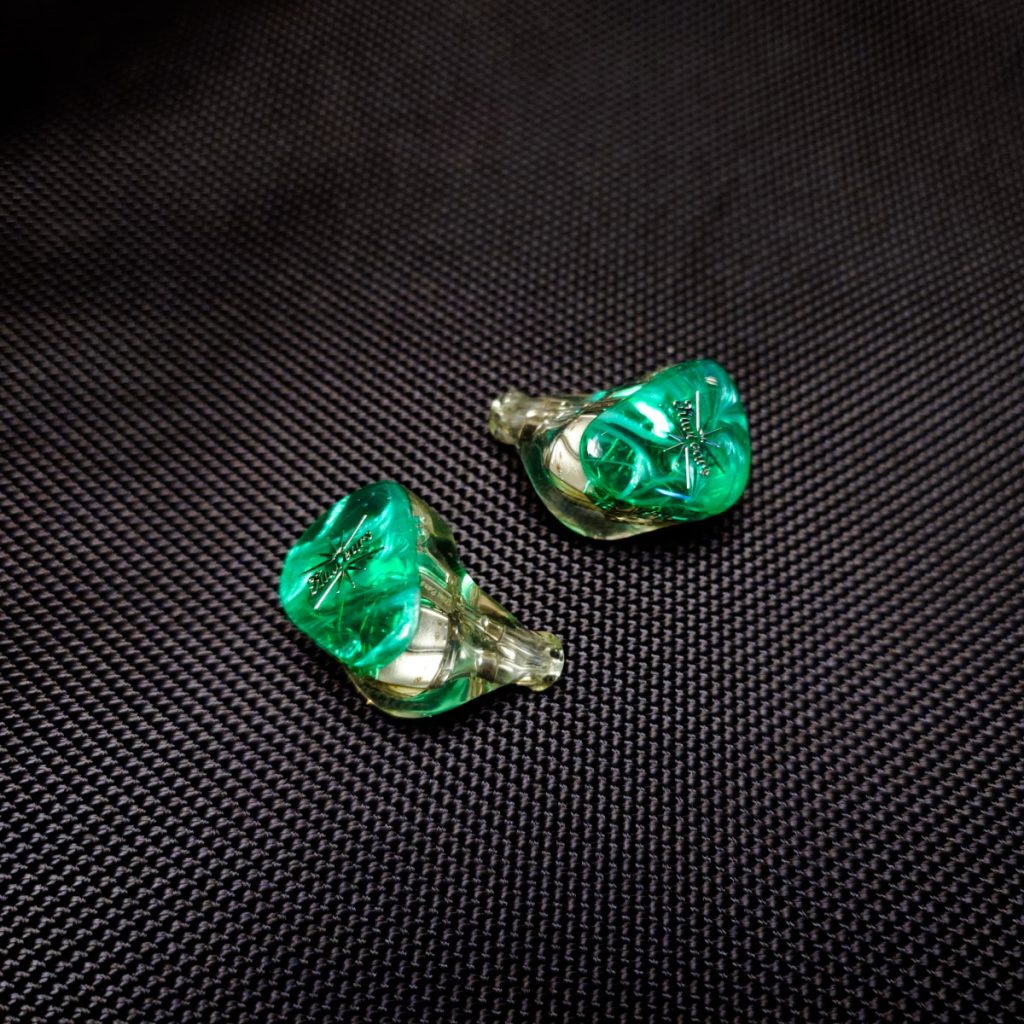
The Orchestra Lite is a comfortable IEM with good ergonomics to provide a comfy wearing experience even for long hours. However, being an IEM with so many drivers jam packed inside, does also mean it can be quite large for people with smaller ears. I personally find that the Orchestra Lite has a nozzle that is a tad short for my liking which does affect the flexibility for me to wear it with some of my favourite eartips but it does isolate extremely well when a perfect seal is achieved, for example when I paired the Orchestra Lite with triple flanges. Additionally, the full resin shell does also mean the lack of vent holes which creates negative air pressure, a simple test such as taking these earpieces out requires me to be extremely careful to pull them off after using it.
Moreover, since the Orchestra Lite has a larger nozzle diameter that is measured at 6mm and with the absence of a proper nozzle lip. Hence, smaller ear tips won’t be able to fit the nozzle, similarly can be said for fitting eartips with slippery texture might just slip off from the nozzle. Nevertheless, the Orchestra Lite will still work with most people and would provide a pleasant wearing experience despite some shortcomings.
Cable
Cable included for the Kiwi Ears Orchestra Lite is a 1.2 meter long, 4-core braided cable. Diving deeper into the cable specifications provided by Kiwi Ears, the stock cable features a 7N oxygen-free copper (OFC) silver-plated copper cable which is enshrouded under a thick layer of transparent polyurethane (PU) cable jacket. The whole construction of the cable is solid that also includes the connector casing on each end and Y-splitter which is made using metal.
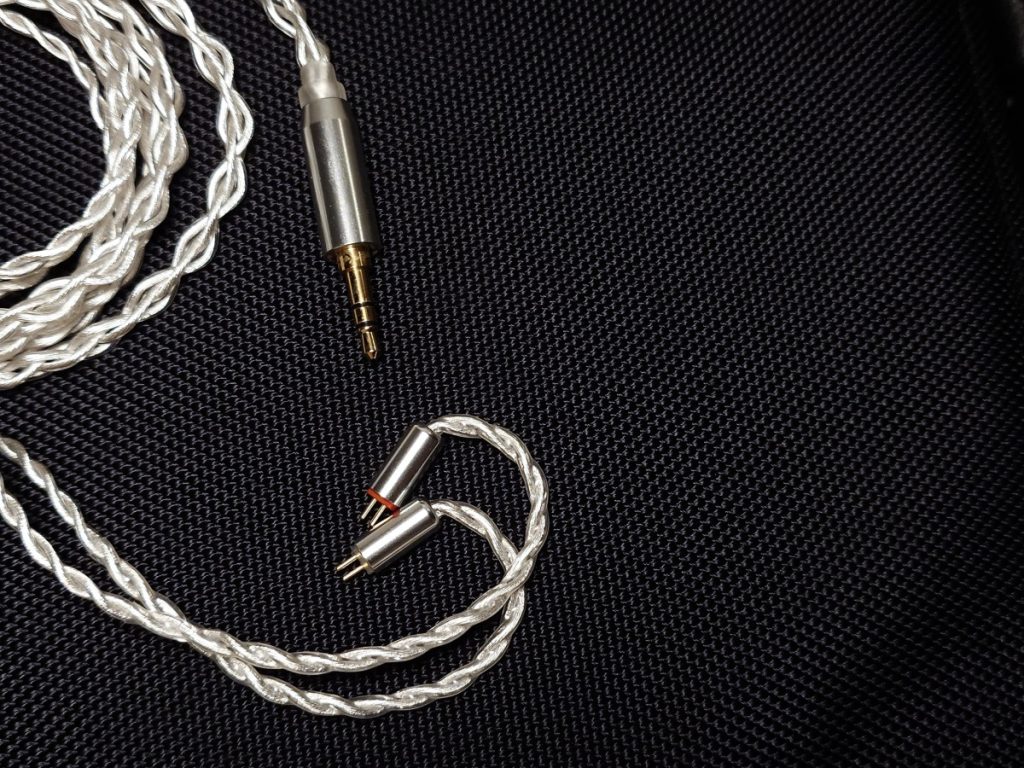
Despite the robust build, the stock cable for this IEM remained lightweight and very manageable which allows for easy storage when wrapped around after usage, while at the same time being resistant to tangling. The cable also does not emit too much microphonics into the IEM when it is in contact with rough surfaces and coarse fabric.
Unfortunately, Kiwi Ears only offer the Orchestra Lite with a standard 2-pin to 3.5mm single-ended connection despite the IEM being priced above the $200 mark. Hence, if you wish to maximize the full potential of this IEM then make sure to have a spare balanced cable around.
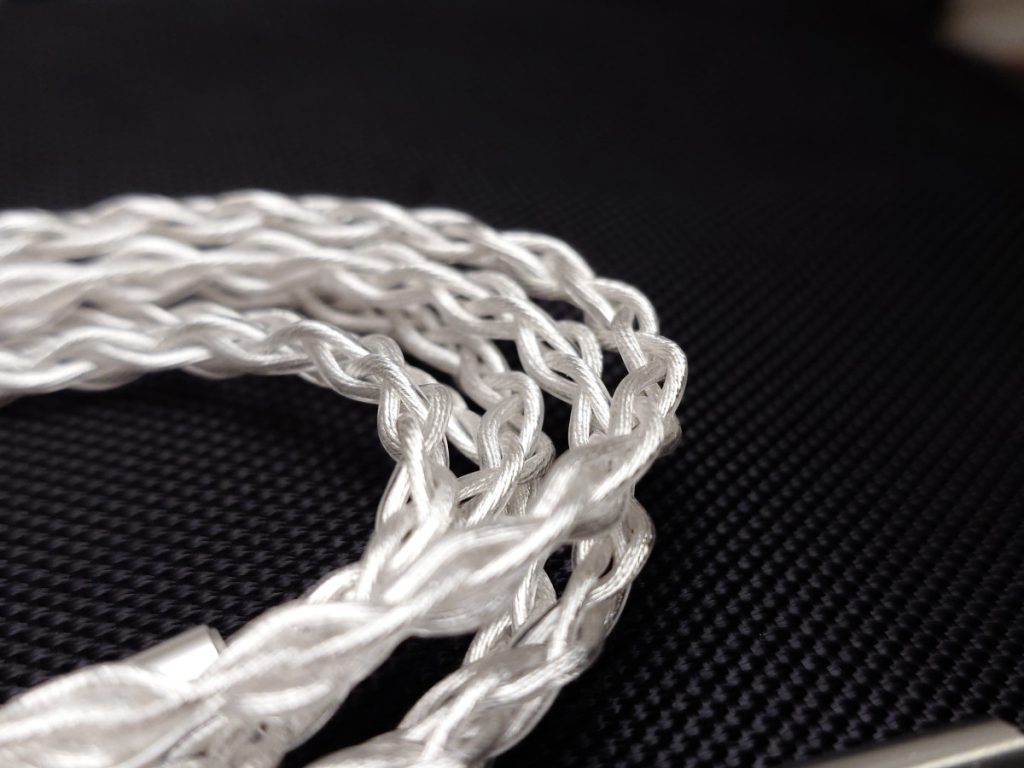
Test Equipment
- Local Hi-Res files > Astell&Kern SE100 M.Chat (Linear Phase Fast Roll-off Filter)
- Tidal (Master) + Local Hi-Res files via UAPP > Sony Xperia 1 V + DSEE Ultimate (ON), Dolby Atmos (OFF)
- Tidal (Master) + Local Hi-Res files via UAPP > Sony Xperia 1 V > Venture Electronics Odo (3.5mm)
- Tidal (Master) + Local Hi-Res files via UAPP > Sony Xperia 1 V > Kiwi Ears Allegro Mini (3.5mm)
- Tidal (Master) + Local Hi-Res files via UAPP > Sony Xperia 1 V > MUSEHIFI M3 II (3.5mm)
Power Requirements
With an impedance rating of 16 ohms and 112dB/SPL in sensitivity, the Kiwi Ears Orchestra Lite was one of the easiest IEM to power that I have personally tried. Based on my testing, I have no issues powering the Orchestra Lite through my smartphone, the Sony Xperia 1 V which has a relatively weak amplification output when compared to other smartphones or a compact DAC/AMP donglesuch as the Kiwi Ears Allegro Mini, yet it yield excellent result as it only requires me to crank a measly 4-5/30 through my Sony Xperia 1 V. Using other devices such as powering the Orchestra Lite through my reference DAP, the Astell&Kern SE100 requires the volume wheel to be cranked up only between 25-30/150 for my comfortable preferred listening volume.
Initial Impression
The Kiwi Ears Orchestra Lite has undergone burn-in phase for at least 48 hours prior to sound evaluation. Throughout the analysis, I paired up the Orchestra Lite with a neutral source, the A&K SE100 on Linear Phase Fast Roll-off Filter chosen given that it’s the most natural sounding filter compared to default. Triple-flange eartips are used as default eartips throughout the sound evaluation. Bonus test tracks used can be found down at the end of this review.
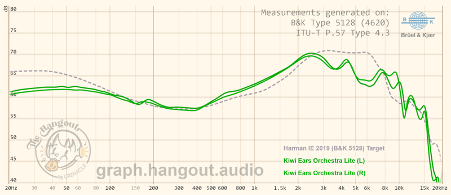
Neutrality, clarity and vocal is the name of the game when it comes to the Kiwi Ears Orchestra Lite. These earpieces do not come with a whole lot of bass quantity or even a wide treble extension to begin with but what the Orchestra Lite does best is presenting strong vocal presence and midrange quality to its listener. A lot of the intensity in the midrange came from the early rise between 500Hz, all the way up towards the eargain region at 2.5kHz, which surely would please those who prefer strong vocal presence.
To add more, the Orchestra Lite is not the smoothest one I have come across within the neutral to mid-centric focused IEM. As can be seen from the graph above, there are some peaks and dips throughout the treble region. Though the effect isn’t too much of a negativity that it might ruin its reputation, I do occasionally hear some harshness emitted from the treble tweeters. Nevertheless, the Kiwi Ears Orchestra Lite is one competent vocal performer, hence let us dive deeper into the sound evaluation.
Low Frequency (Bass)
Being an IEM that focuses on neutrality and clarity, the Orchestra Lite does not have a lot of quantity to please bassheads or those who prefer Harman-esque IEMs which usually have a bass boost to balance the higher frequencies. The bass on the Orchestra Lite can be described as lean, polite and precise thanks to the usage of BAs. Allowing for a much more responsive and snappy bass response.
Due to the lean bass, sub-bass on these are clean with good clarity yet soft. Sub-bass rumbles are soft and barely capable when it comes to rendering complex textures below 50Hz because of driver limitations. I could not find a hint of muddiness or sluggishness when tested through multiple options of my usual bass testing tracks, one such as Hollow (16 Bit Remix) – Björk. Since the Orchestra Lite is an all-BA driver setup, it is not surprising that this IEM excels in delivering a snappy and rapid bass responsiveness but at the same time having a much shorter bass transient/decay when compared to a hybrid setup of a dynamic and balanced armatures.
That said, mid-bass on these has quite a decent amount of punch and weight, albeit the bass slams on the Orchestra Lite resemble more towards a polite “thump”, rather than something stronger like a “thud” or a “boom”. Nevertheless, the tuning on these still provides a tasteful body and warmth into the sound signature which indirectly affects the midrange quality ever so pleasantly.
Middle Frequency (Mid)
Following the footsteps of the original Orchestra, the Orchestra Lite also excels in the midrange region. In short, the midrange can be described as neutral with a tinge of warmth, clean sounding, offers great clarity and with a strong upper-mid presence. Additionally, vocals on this IEM gained most of the benefits from the emphasized upper-mid as it pushes its presence forward. For a person that is sensitive to upper-mid emphasis, the Orchestra Lite can sound a bit too intense for my personal liking when playing songs such as Soreo Aito Yobunara (From THE FIRST TAKE) – Uru and Uroko – Motohiro Hata. But could be negated by swapping ear tips or by simply lowering the volume by a notch lower.
Timbre on this IEM leans slightly towards being a mellow sounding earpiece, that is often associated with its soft characteristics within the midrange. This effect was apparent when I tested the Orchestra Lite with some instrumentals such as Mediterranean Sundance – Al Di Meola, as the guitar plucks sounded soft. Although, due to the neutral tuning approach in the midrange, the sound of tapping on the body of the guitar in the track sounded light and unnatural. Regardless, I could not find any other shortcomings such as haziness from the BA drivers, allowing the Orchestra Lite to present the midrange with great clarity.
High Frequency (Treble)
Based on my listening, the treble on the Orchestra Lite is not dark by any means but it is more subdued with just enough energy, sparkle and brilliance to make other elements in songs stay present. While this sort of approach is safe for the sensitive ears, the Orchestra Lite does not mean the smoothest by any means. For my personal preference, the Orchestra Lite was a bit harsh yet still tolerable. I would describe it to be more on the coarser side rather than piercing, and this might be due to the peaks and dips around the treble region.
Treble extension on the Orchestra Lite is quite underwhelming while it does give the IEM a decent amount of airiness and the capability to render lingering high-notes. Despite that being the case, the Orchestra Lite does not accentuate sibilant sound although when tested using numerous songs such as Underwater Love – Soulpefreesia or when tested with video games.
Technicality
Being an all-BA configuration, it is no surprise that the Orchestra Lite excels when it comes to dishing out great amounts of details and rendering small nuances. However, when it comes to resolution, the Orchestra Lite receives an average score in my testing due to the case that the IEM has zero problems when rendering high level details, but when it comes to low level details such as reverberations and resonance coming from typically stringed instruments is where the Orchestra Lite often come short.
Soundstaging on the Orchestra Lite is average at best. To be more in-depth, in terms of width the soundstage on these are quite intimate meanwhile in terms of height, there was a decent depth I could tell if an element is a tall object or coming from a height quite well. Spatial imaging were average too, there was a slight blurriness and inconsistencies thus it was not as razor sharp that I could pinpoint the exact direction of a particular element in a song. Separation and layering produced by this IEM was slightly above average in my book, given how well it separates vocals and other elements though there was melding whenever there were too many elements for such in orchestral, classical or even trash metal genres.
Lastly for the dynamic range test for the Kiwi Ears Orchestra Lite is rated at above average. Utilizing the Ultimate Headphone Test – ABYSS Headphone dynamic range test as a reference. In short, a sample sound of a drum and a bell are played simultaneously as much as 7 counts, but only the sound of the bells will become quieter. Hence, from a scale of 7 counts, Orchestra Lite impressively was able to produce an audible 6 out of 7 counts.
Comparison(s)
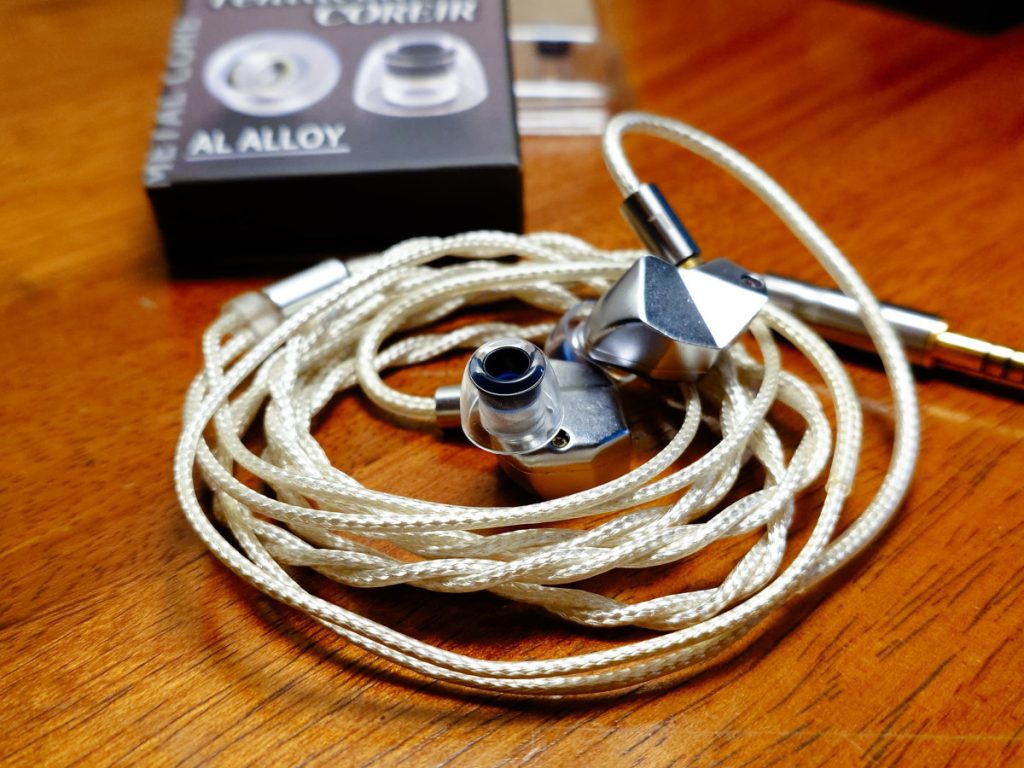
final audio B3
The final B3 has easily been one of my favourite IEMs with a mid-centric focused sound signature. Its neutral, warm low-end, sweet and velvety midrange and a smooth, mellow yet detailed treble is the reason I could never get tired of the B3.
Although being six BAs less and without any crossovers compared to the Orchestra Lite, the B3 appears to be a much warmer and thicker sounding IEM due to the elevated mid-bass and lower midrange which gave the B3 its signature warm, velvety midrange. Sub-bass were slightly much stronger and rumbly on the Orchestra Lite, meanwhile the mid-bass was punchier and hefty on the B3. Midrange on both IEMs are forward and intimate, although the Orchestra being a much leaner sounding midrange and with its accentuated upper-mid sounded slightly more intense. Meanwhile, B3 on the other hand were effortless, natural yet equally if not slightly more detailed than the Orchestra Lite.
Treble on both IEMs are subdued and more towards a mellower side. However, there was more sparkle due to the brighter timbre and wider dynamic range on the Orchestra Lite. While the B3 was slightly more detailed, had better resolution and wider treble extension hence, giving the B3 a slight advantage in terms of soundstage whereby it was slightly more airy and spacious when compared to the Orchestra Lite.
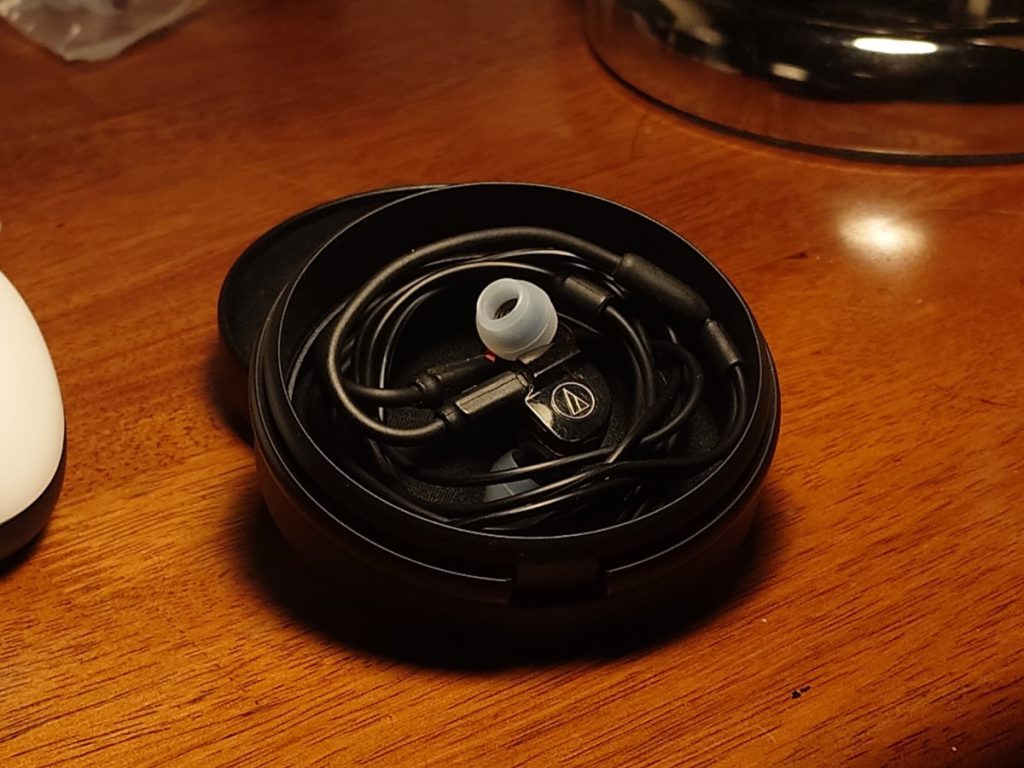
Audio Technica ATH-IM02
The ATH-IM02, also an IEM with two BA driver configurations, shares a similar sound signature to the Orchestra Lite that is more towards a neutral and slightly warm approach. Albeit, the IM02 being slightly more to a reference based tuning featuring flat bass response, low eargain in the upper-mid and inoffensive treble.
Compared to the Orchestra Lite, which starts with the bass. Orchestra Lite has a better sub-bass performance, punchier mid-bass, more defined bass notes compared to the IM02 which sounded too flat or light whereby the bass is almost considered as non-existent. When swapping both IEMs back and forth to compare the midrange region, to my surprise the IM02 sounded much more forward, richer realistic timbre and clearly separated as if vocals has its own spotlight and somewhat made the Orchestra Lite sounded like a typical Harman-esque, V-shape sounding IEM by a long shot. Despite, the Orchestra Lite accentuates the upper-mid a bit more by a couple decibels, perhaps it was due to the lack of bass in the IM02 which explains the huge midrange difference.
Treble and technicalities on the other hand also shows some contrast between the two, in which the IM02 sounded slightly brighter, possessed a stronger treble presence and clarity to the Orchestra Lite. Soundstaging also appear to be much larger and airy on the IM02 albeit the Orchestra Lite has an advantage over the IM02 in terms of dynamic range, separation and layering.
Eartip Combination(s)
E Pro EP01
Apart from triple flanges, the EP01 ear tips by E Pro were also one of my favourites to pair with the Orchestra Lite which mainly helps to smoothen the slightly harsh treble which as aforementioned in the sound evaluation and opens the soundstage by a noticeable amount. Additionally, the eartips allows the midrange being slightly less intense without making vocals sound recessed while at the same time preserves clarity. Bass became slightly less due to the wide bore design of this ear tip, but it does make the IEM sounded a bit more tighter and able to deliver a slightly punchier, impactful mid-bass slam.
Purchasing Links and Where to Get?
Kiwi Ears Official Website:
https://kiwiears.com/products/kiwi-ears-orchestra-lite
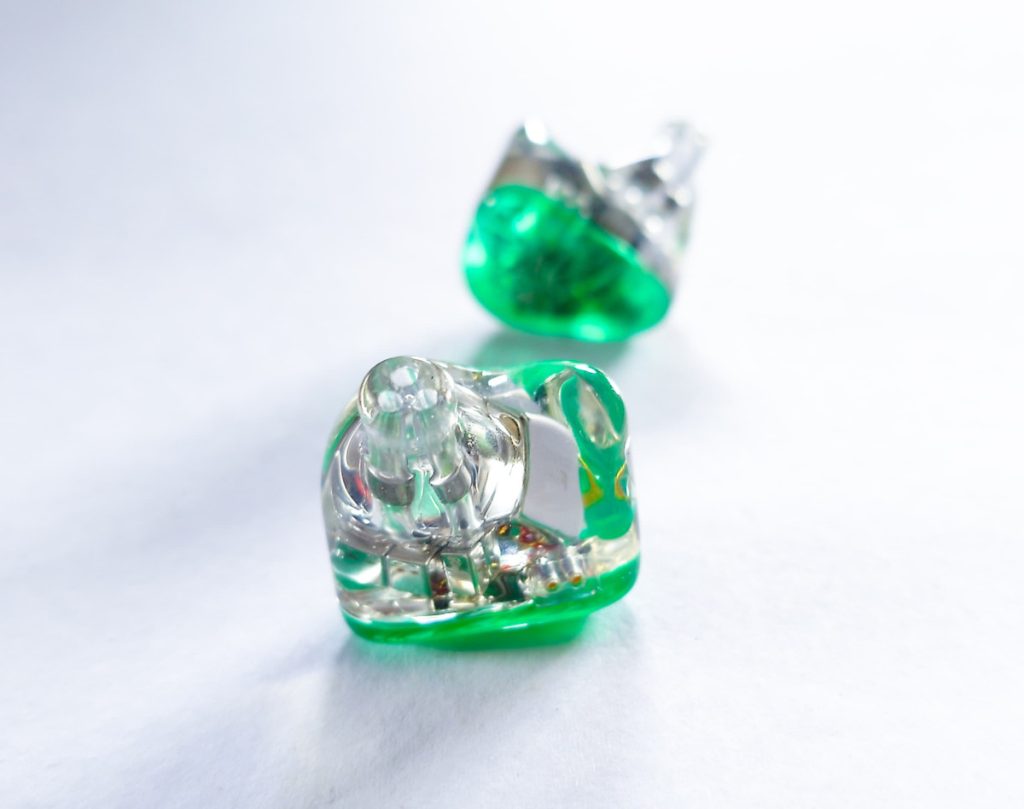
Conclusion
To wrap up my review for the Orchestra Lite, it was unfortunate on my part for not being able to experience the original Orchestra compared to those who had previously listened and compared to the Orchestra Lite. But at the same time, I could at least understand and feel why the audio community adores the Orchestra Lite or how it reminds the previous Orchestra owners of their IEM. Despite being a mid-centric focused IEM, it does not mean that the Orchestra Lite excels in one or two genres of music when in fact the IEM was actually quite versatile and suitable for a wide variety of genres. Though I would not personally recommend it for those who seek this IEM for heavy genres such as Grindcore, Speed Metal, Techno or simply tracks that possess a lot of bright trebles considering that this IEM does not excel in the treble region and is slightly harsh at the same time.
Other than that, I would happily recommend this IEM and pretty much still relevant in today’s market despite it having been out for quite a while. At least when we’re speaking within the wavelength of the Chi-Fi market which is very competitive, especially if one could get it at a discounted price. Regardless, plenty thanks and appreciation to Evelyn and Kiwi Ears for their willingness to provide a review unit for me to personally experience the Orchestra Lite. Thus, that is the end of the review and hope to see you in my next review!
Additional Test Tracks
Honey Suckle Rose – The Very Thought of Two 44.1kHz
Money For Nothing (Explicit) – Dire Straits 44.1kHz
A Poem Titled You – TAEYEON 44.1kHz
Anesthetize (Live) – Porcupine Tree DSD256
Vermilion – Slipknot 44.1kHz
Kanade – SUKIMASWITCH 44.1kHz
La vaguelette (Original Game Soundtrack) – HOYO-MiX 44.1kHz
Rhythm – Jamey Haddad, Lenny White; Mark Sherman 44.1kHz
Kimigatame (When Suara Meets DSD 11.2Mhz) – Suara DSD11.2MHz
Just Coolin’ – Art Blakey 192kHz
Automatic – Hikaru Utada 44.1kHz
In My Room – Hikaru Utada 44.1kHz
Colors (Live in Studio) – Black Pumas 192kHz
Timbres – Yosi Horikawa 44.1kHz
Misguided Ghosts – Paramore 44.1kHz
